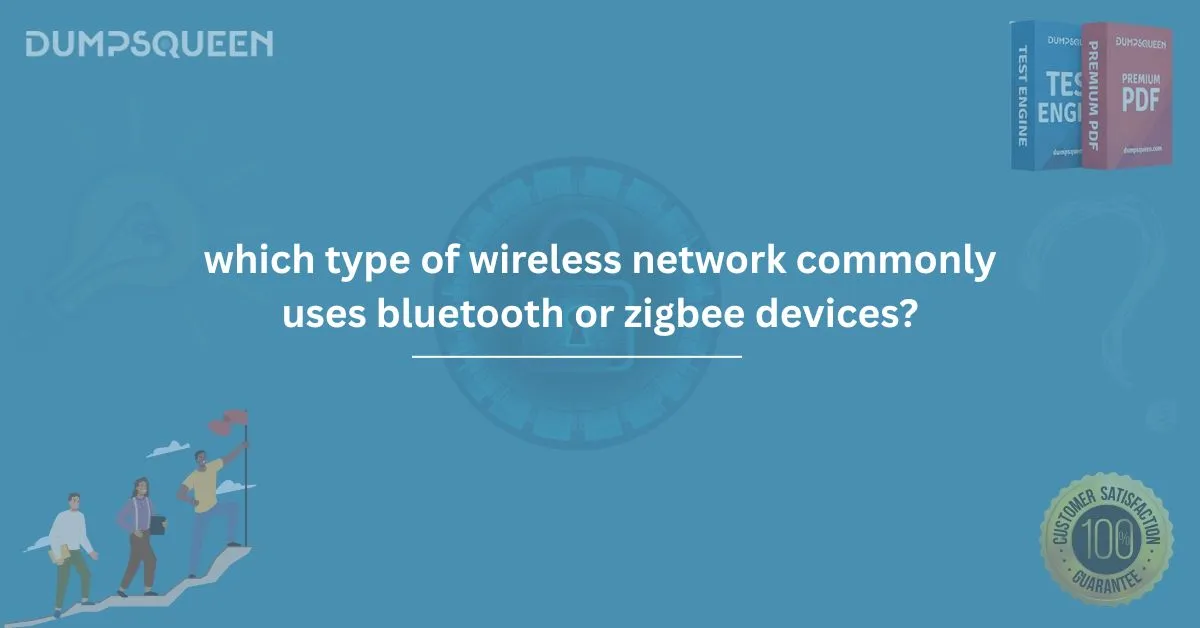Introduction
Wireless networking has revolutionized communication, enabling devices to connect seamlessly without the limitations of physical cables. Among various wireless networking technologies, Bluetooth and Zigbee have emerged as prominent solutions for short-range communication and IoT (Internet of Things) applications. Understanding the types of wireless networks that utilize Bluetooth and Zigbee devices is crucial for businesses, developers, and tech enthusiasts who wish to leverage these technologies for enhanced connectivity and automation.
Understanding Wireless Networks
Wireless networks facilitate data exchange between devices through radio frequency (RF) signals, eliminating the need for wired connections. These networks are categorized based on their coverage area, data transmission speed, and application. Among these categories, personal area networks (PANs) stand out as the primary type that employs Bluetooth and Zigbee technologies.
Personal Area Networks (PANs) and Their Role
A Personal Area Network (PAN) is a wireless network designed for short-range communication, typically within a range of a few meters. PANs are used to connect personal devices such as smartphones, tablets, laptops, and IoT gadgets. The two most commonly used technologies for PANs are Bluetooth and Zigbee, each serving distinct purposes but sharing a common objective: enabling efficient and low-power communication between devices.
Bluetooth Technology in Wireless Networks
Bluetooth is a short-range wireless communication technology designed primarily for exchanging data between devices over short distances. Developed in the 1990s, Bluetooth has become an integral part of modern networking due to its versatility and ease of integration.
Features of Bluetooth Technology:
-
Short-range connectivity: Typically, Bluetooth devices operate within a range of 10 to 100 meters, depending on the version and power class.
-
Low power consumption: Bluetooth technology, particularly the Bluetooth Low Energy (BLE) variant, is optimized for minimal energy usage, making it ideal for wearable devices and IoT applications.
-
Secure communication: Bluetooth employs encryption and authentication mechanisms to prevent unauthorized access and data breaches.
-
Interoperability: Bluetooth is widely supported across multiple platforms and devices, making it a universal solution for short-range networking.
Applications of Bluetooth in PANs:
-
Wireless peripherals: Bluetooth is commonly used to connect wireless keyboards, mice, headphones, and speakers to computers and smartphones.
-
Health monitoring devices: Many medical gadgets, such as fitness trackers and heart rate monitors, utilize Bluetooth for seamless data transfer.
-
Home automation: Smart home devices, including smart locks, lighting systems, and thermostats, often rely on Bluetooth connectivity.
-
File sharing and data transfer: Bluetooth enables quick file transfers between mobile devices without the need for an internet connection.
Zigbee Technology in Wireless Networks
Zigbee is a wireless communication protocol designed specifically for low-power, low-data-rate applications, making it an ideal choice for IoT and industrial automation. Developed under the IEEE 802.15.4 standard, Zigbee excels in creating robust and scalable networks for smart devices.
Features of Zigbee Technology:
-
Mesh networking: Zigbee supports mesh topology, allowing devices to communicate indirectly through intermediary nodes, enhancing network reliability and range.
-
Ultra-low power consumption: Zigbee is designed for battery-powered devices that require extended operational life.
-
High device density support: A single Zigbee network can support thousands of devices, making it suitable for large-scale IoT deployments.
-
Reliable and secure communication: Zigbee uses strong encryption protocols to ensure secure data transmission between devices.
Applications of Zigbee in PANs:
-
Home automation: Zigbee is widely used in smart homes for controlling lighting, security cameras, and HVAC systems.
-
Industrial automation: Zigbee networks help monitor and control industrial equipment, improving efficiency and safety.
-
Agriculture: Wireless sensor networks in farming applications use Zigbee to track soil moisture, temperature, and crop health.
-
Energy management: Zigbee-enabled smart meters and energy monitoring systems help optimize power consumption.
Comparison Between Bluetooth and Zigbee
While both Bluetooth and Zigbee are utilized in personal area networks, they differ in various aspects:
| Feature | Bluetooth | Zigbee |
|---|---|---|
| Range | Up to 100 meters | Up to several hundred meters (mesh) |
| Power Usage | Low (BLE) | Ultra-low |
| Data Rate | Higher (1-3 Mbps) | Lower (250 kbps) |
| Network Topology | Star, point-to-point | Mesh, star, cluster tree |
| Applications | Consumer electronics | IoT, industrial, automation |
Future of Wireless PANs with Bluetooth and Zigbee
As IoT continues to evolve, both Bluetooth and Zigbee are expected to play significant roles in shaping the future of wireless connectivity. The adoption of Bluetooth 5.0 and Zigbee 3.0 has improved their performance, making them more efficient for modern applications. These advancements will further enhance smart home solutions, healthcare monitoring, and industrial automation, reinforcing their importance in the wireless networking landscape.
Free Sample Questions
1. Which type of wireless network commonly uses Bluetooth or Zigbee devices?
A) Local Area Network (LAN)
B) Personal Area Network (PAN)
C) Wide Area Network (WAN)
D) Metropolitan Area Network (MAN)
Answer: B) Personal Area Network (PAN)
2. What is the primary advantage of Zigbee over Bluetooth?
A) Higher data transfer speed
B) Longer battery life and mesh networking support
C) More expensive implementation
D) Less secure communication
Answer: B) Longer battery life and mesh networking support
3. Which of the following is a key feature of Bluetooth technology?
A) High power consumption
B) Long-range connectivity (over 1 km)
C) Low energy consumption (BLE)
D) Only supports one-to-one communication
Answer: C) Low energy consumption (BLE)
4. In which application is Zigbee most commonly used?
A) High-speed internet browsing
B) Smart home automation
C) Video streaming
D) Large-scale data storage
Answer: B) Smart home automation
Conclusion
Bluetooth and Zigbee have become indispensable technologies in the realm of personal area networks, enabling seamless connectivity for various applications. While Bluetooth excels in high-speed data transfer for consumer electronics, Zigbee stands out in low-power, long-range, and large-scale IoT deployments. As the demand for wireless connectivity grows, these technologies will continue to evolve, shaping the future of smart homes, healthcare, and industrial automation. DumpsQueen remains committed to providing valuable insights into cutting-edge networking technologies, ensuring that professionals stay informed and ahead in the ever-changing digital landscape.



